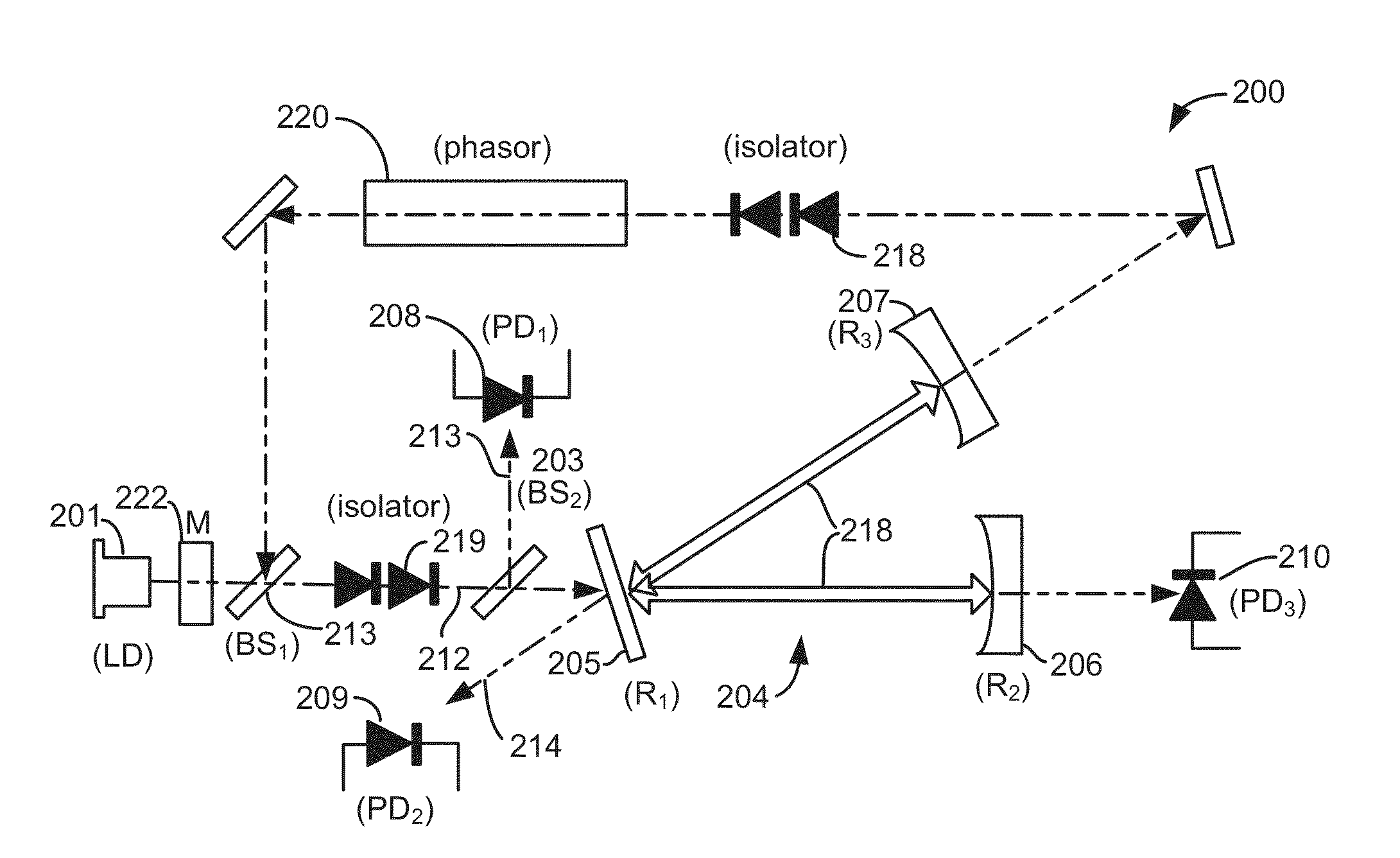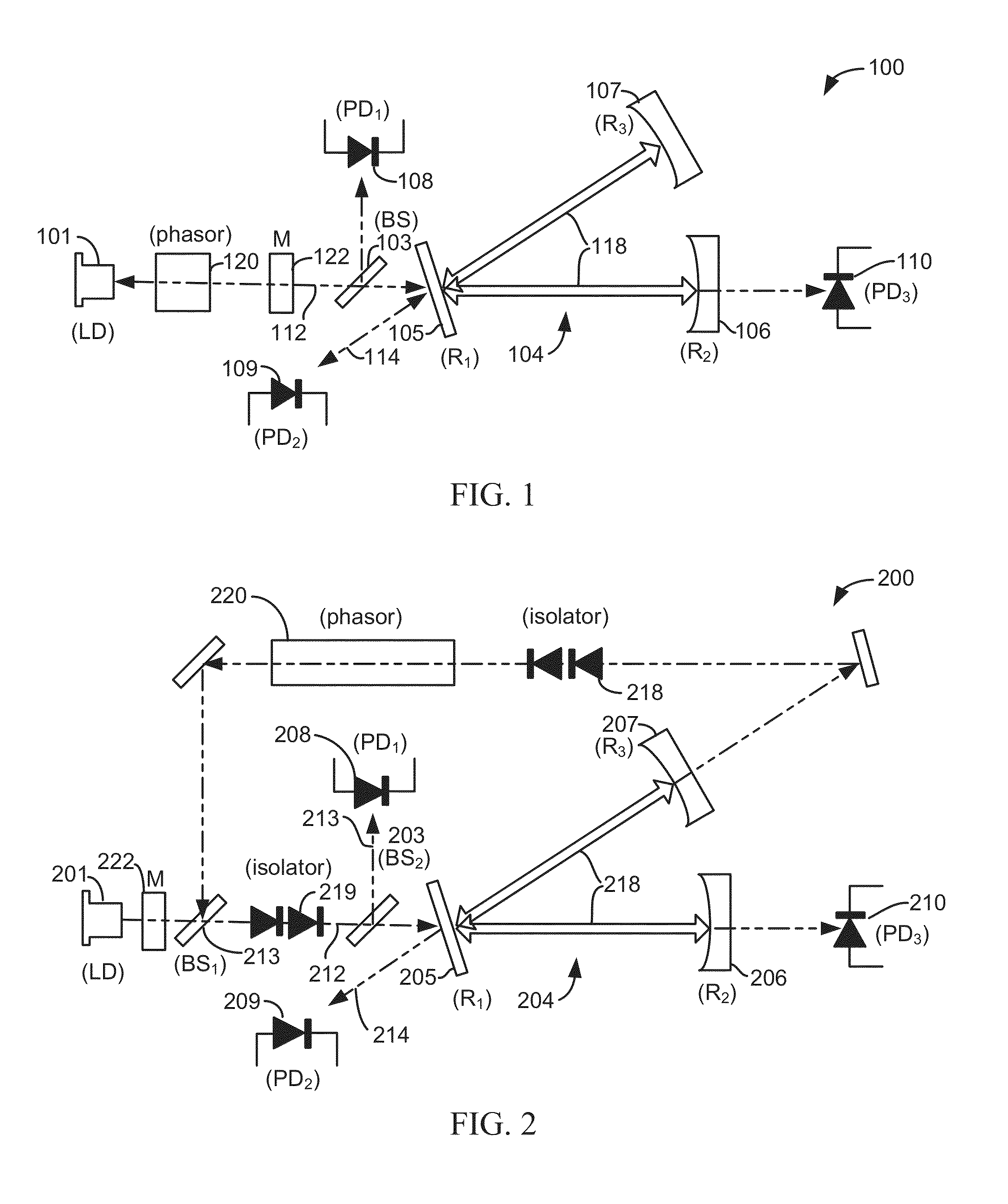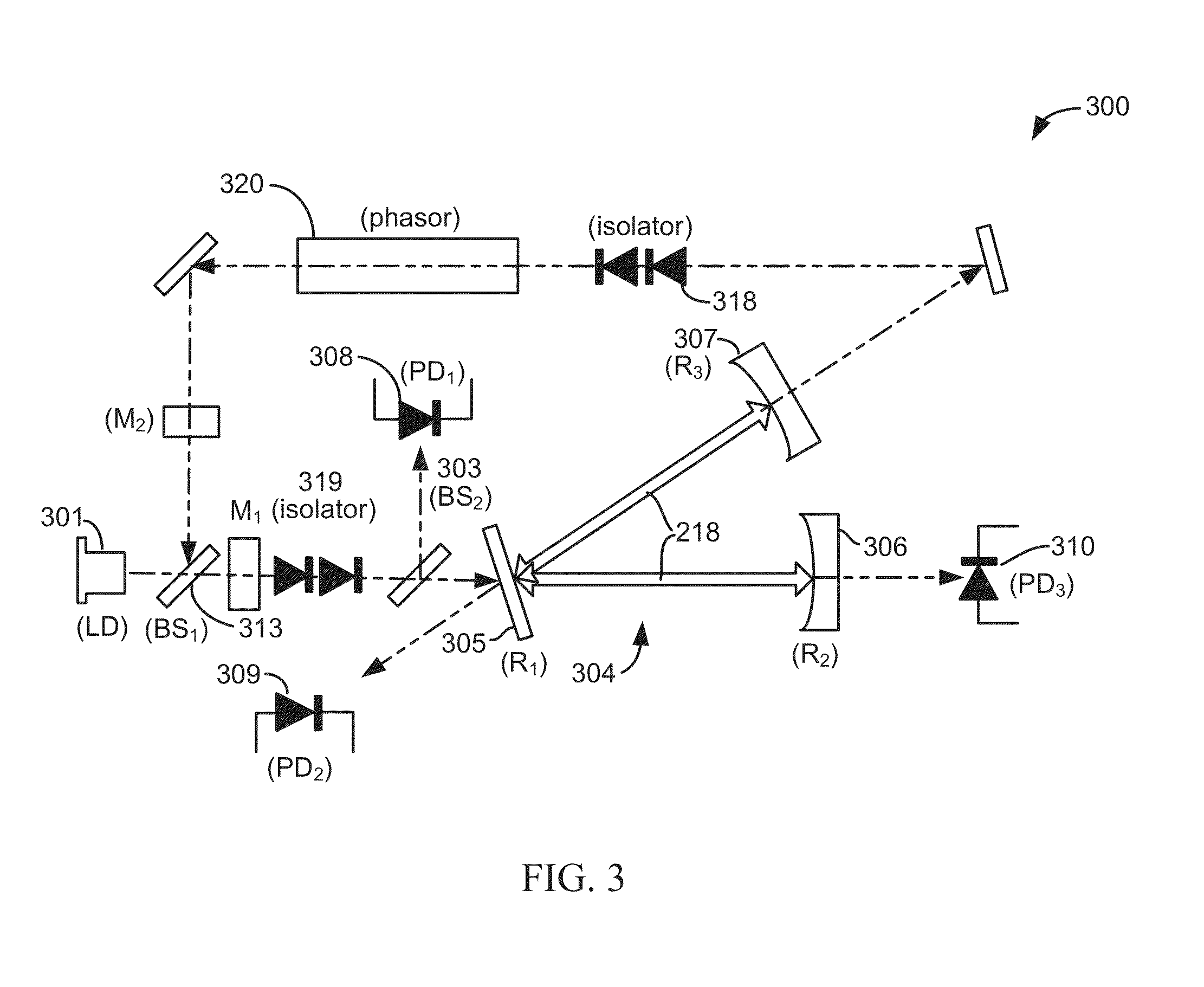Cavity enhanced laser based gas analyzer systems and methods
- Summary
- Abstract
- Description
- Claims
- Application Information
AI Technical Summary
Benefits of technology
Problems solved by technology
Method used
Image
Examples
Embodiment Construction
[0028]According to various embodiments, cavity enhanced absorption spectroscopy systems and methods are provided for detecting trace gases using a resonance optical cavity, which contains a gas mixture to be analyzed, and a laser coupled to the cavity by optical feedback. The cavity can have any of a variety of configurations with two or more mirrors, including for example a linear cavity, a v-shaped cavity and a ring optical cavity. The cavity will have multiple cavity resonant modes, or a comb of frequencies spaced apart, as determined by the parameters of the cavity, including the length of the cavity, as is well known.
System Configurations
[0029]FIG. 1 illustrates a cavity enhanced absorption spectroscopy (CEAS) system 100 according to one embodiment. As shown, CEAS system 100 includes a light source 101 that emits continuous wave coherent light, such as continuous wave laser light, an optical cavity 104 and three detectors (108, 109 and 110). As shown, cavity 104 is a V-shaped c...
PUM
 Login to View More
Login to View More Abstract
Description
Claims
Application Information
 Login to View More
Login to View More - R&D
- Intellectual Property
- Life Sciences
- Materials
- Tech Scout
- Unparalleled Data Quality
- Higher Quality Content
- 60% Fewer Hallucinations
Browse by: Latest US Patents, China's latest patents, Technical Efficacy Thesaurus, Application Domain, Technology Topic, Popular Technical Reports.
© 2025 PatSnap. All rights reserved.Legal|Privacy policy|Modern Slavery Act Transparency Statement|Sitemap|About US| Contact US: help@patsnap.com



